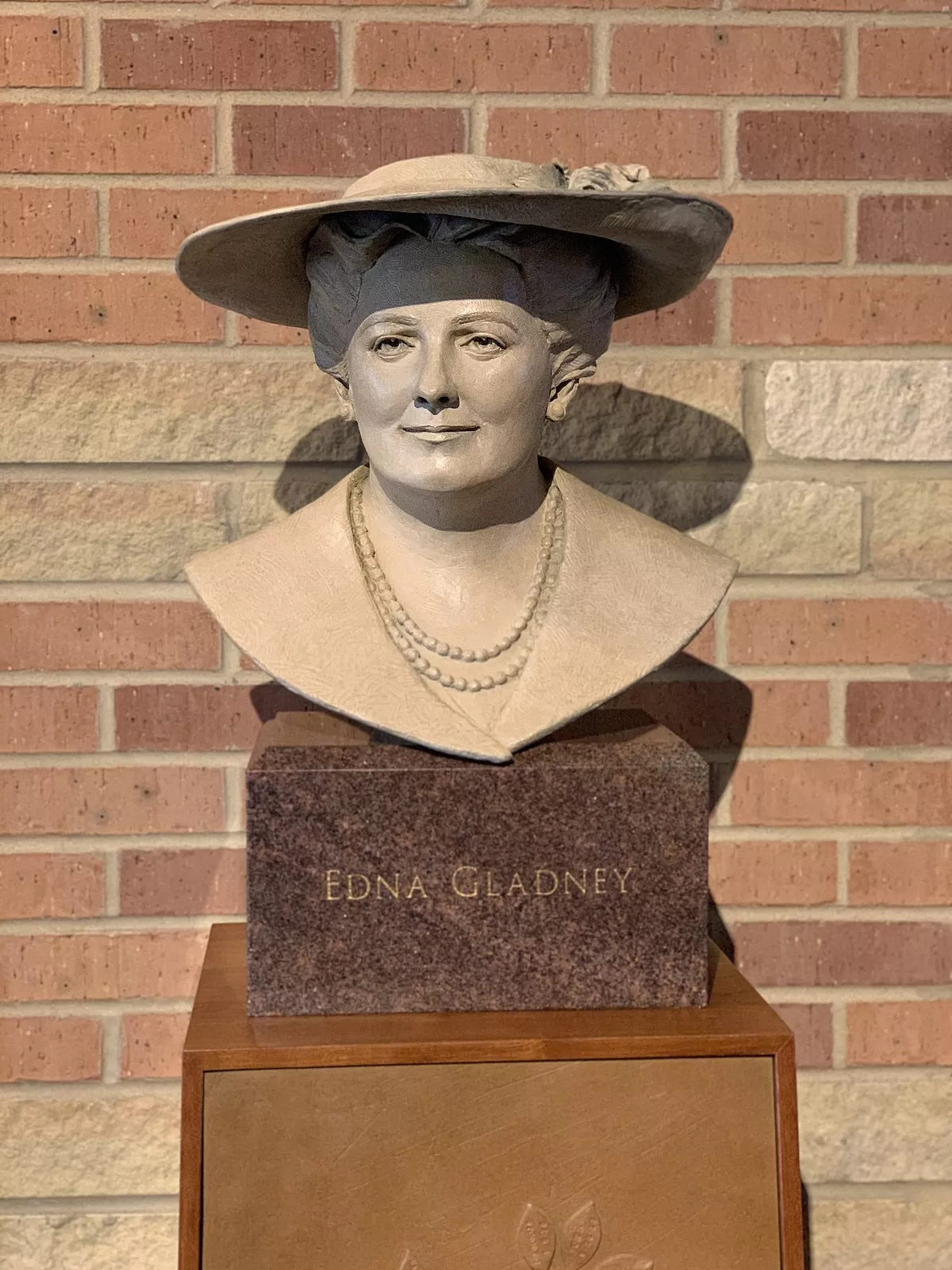 1.
1. Edna Browning Kahly Gladney was an early campaigner for children's rights and better living conditions for disadvantaged children.

 1.
1. Edna Browning Kahly Gladney was an early campaigner for children's rights and better living conditions for disadvantaged children.
Edna Gladney's mother was not married and was 17 when Edna was born.
Edna Gladney's aunt was involved in Fort Worth society and women's clubs, and Edna Gladney quickly moved into these social circles as well.
In 1910, Edna Gladney joined the Sherman Civic League and started inspecting local meat markets and public restrooms for cleanliness.
On one of these Grayson County, Texas inspections, Edna Gladney came across the Grayson County Poor Farm, which was little more than a dumping ground for the feeble-minded, handicapped, indigent, mentally ill, and unwanted.
Impatient for action, the women of the civic league, led by Edna Gladney, went to the farm and personally cleaned it.
Edna Gladney studied settlement work and child welfare, and established a free day nursery in Sherman to provide childcare for working mothers who had moved into industrial jobs during World War I Thirty-five women enrolled their children on opening day of the Sherman Day Nursery and Kindergarten for Working Mothers.
In 1921, the Gladneys returned to Fort Worth, where Edna attended classes at Texas Christian University.
Edna Gladney began to devote more and more of her time to the Texas Children's Home and Aid Society, and by 1927, she had been named superintendent, a position she held until 1961.
The large home, located on El Paso Street, was owned by the head of Texas Power and Light; Edna Gladney's mother oversaw daily operations of the facility until her death in 1938.
Edna Gladney continued the work of Reverend Morris by placing abandoned children with adoptive families.
Edna Gladney expanded the society's activities to focus on the care of unmarried mothers and an adoption service for their babies.
Edna Gladney focused her efforts on hard-to-place children during the Depression.
Edna Gladney lobbied the Texas 44th legislature of 1935 to have the word "illegitimate" kept off birth certificates of adopted and abandoned children.
Edna Gladney succeeded in 1936, making Texas the first state in the southwest to legally remove the stigma of illegitimacy.
In 1939, Edna Gladney successfully campaigned for a change in the Texas law that sealed the original birth certificates of adopted children and that made a second copy of the birth certificate, listing only the child's adoptive name and parents; the sealed original birth certificate could be opened only by court order.
Edna Gladney is buried at Rose Hill Cemetery in East Fort Worth.
Edna Gladney placed over 10,000 babies with adoptive parents during her career and totally revolutionized adoption practices.
Edna Gladney helped to grant adoptive children the same rights as "natural" children and gave orphaned children and many birth mothers a place to stay and a hospital where they could receive treatment.
Edna Gladney helped develop modern day adoption practices and removed the stigma of "illegitimacy" from birth records and from society.
Edna Gladney treated all of "her" children as if they were her own and continued correspondence with adopted children long after they had left her care.
In 2019, the Edna Gladney Center was excited to unveil a very special bronze bust of Mrs Edna Gladney by artist Linda Stinson.